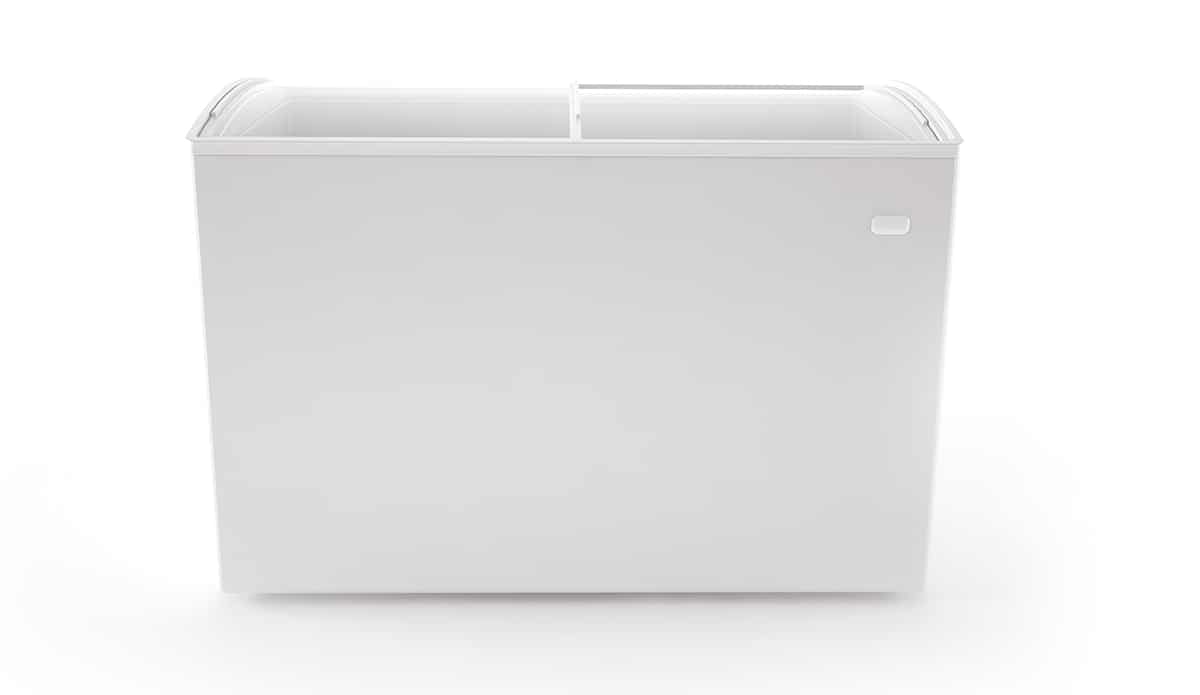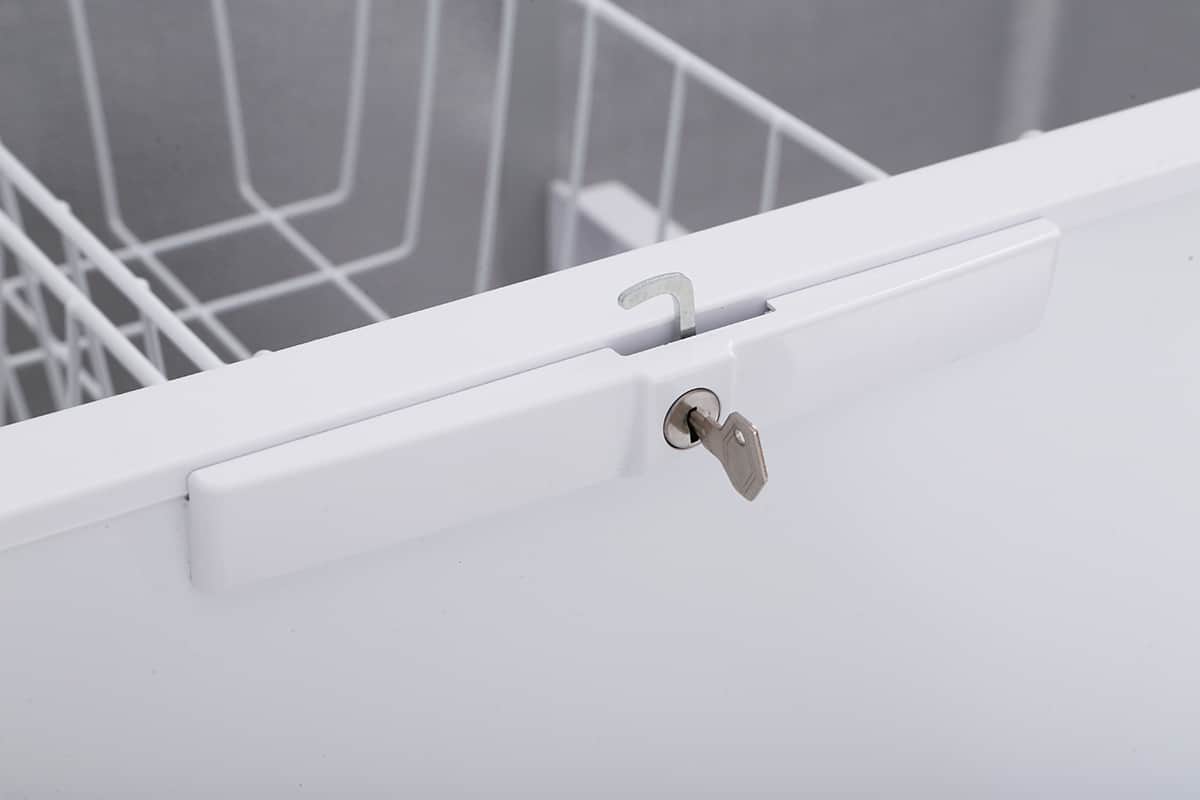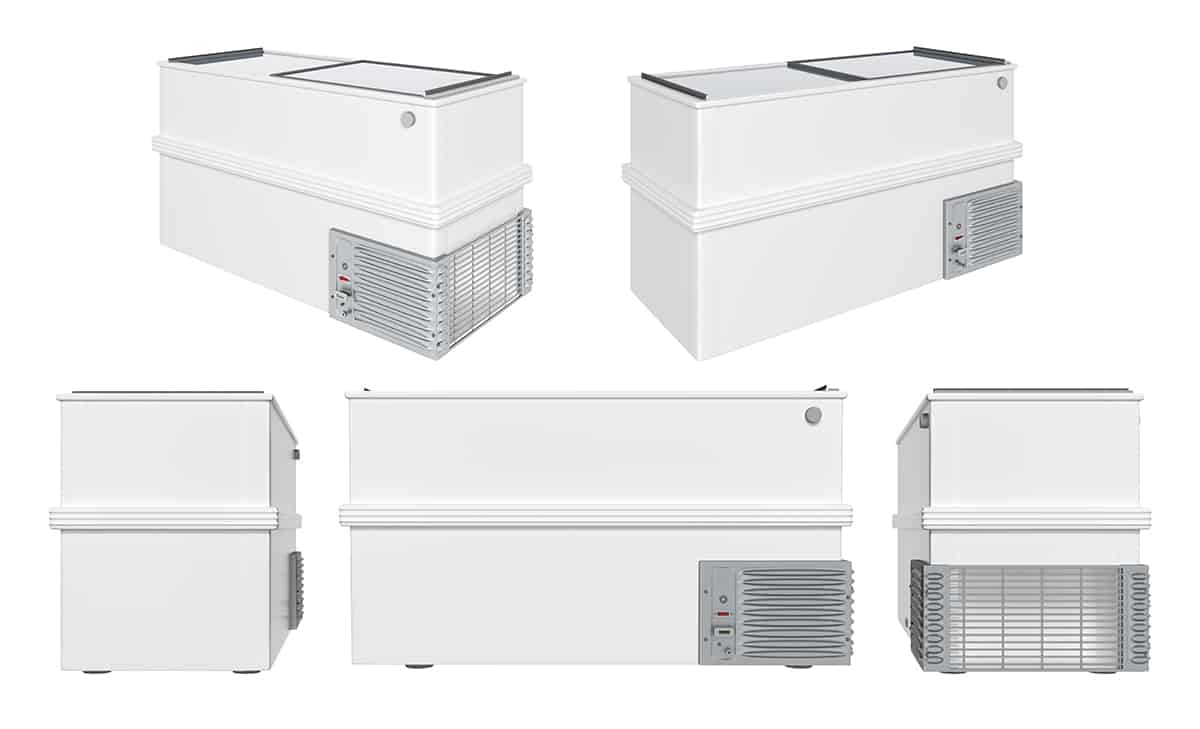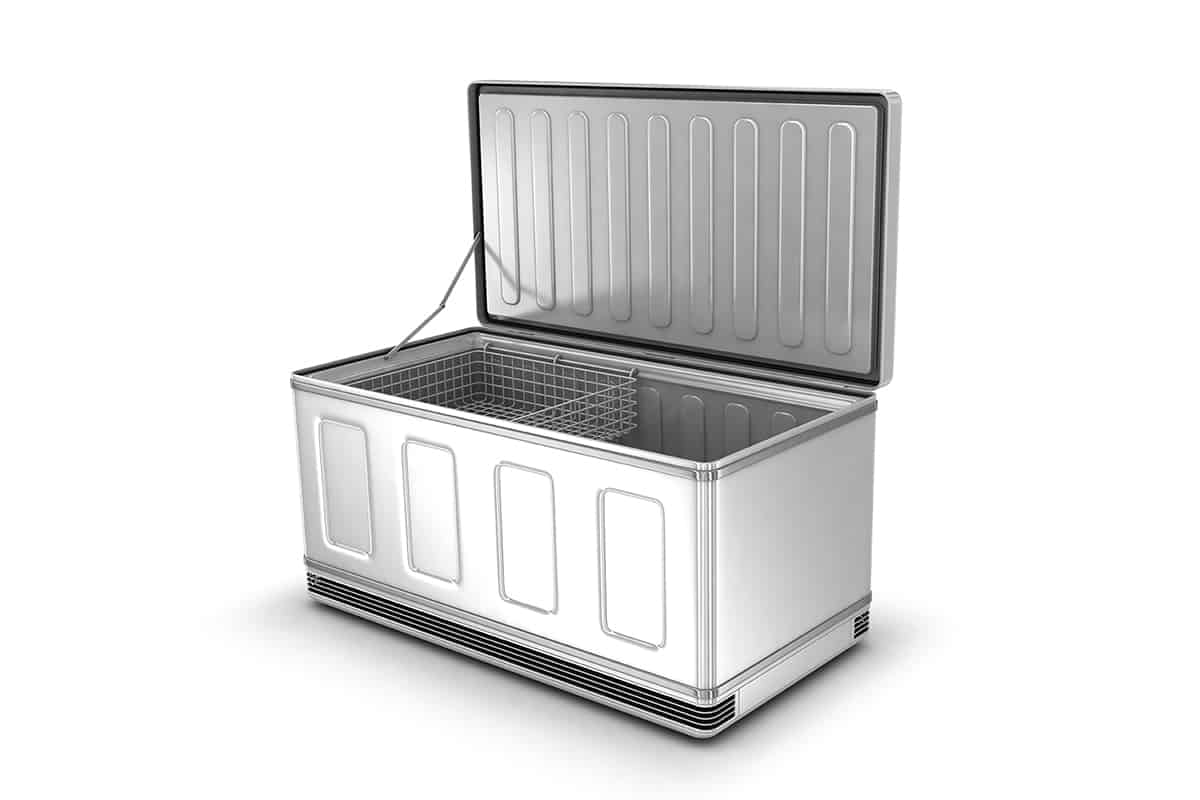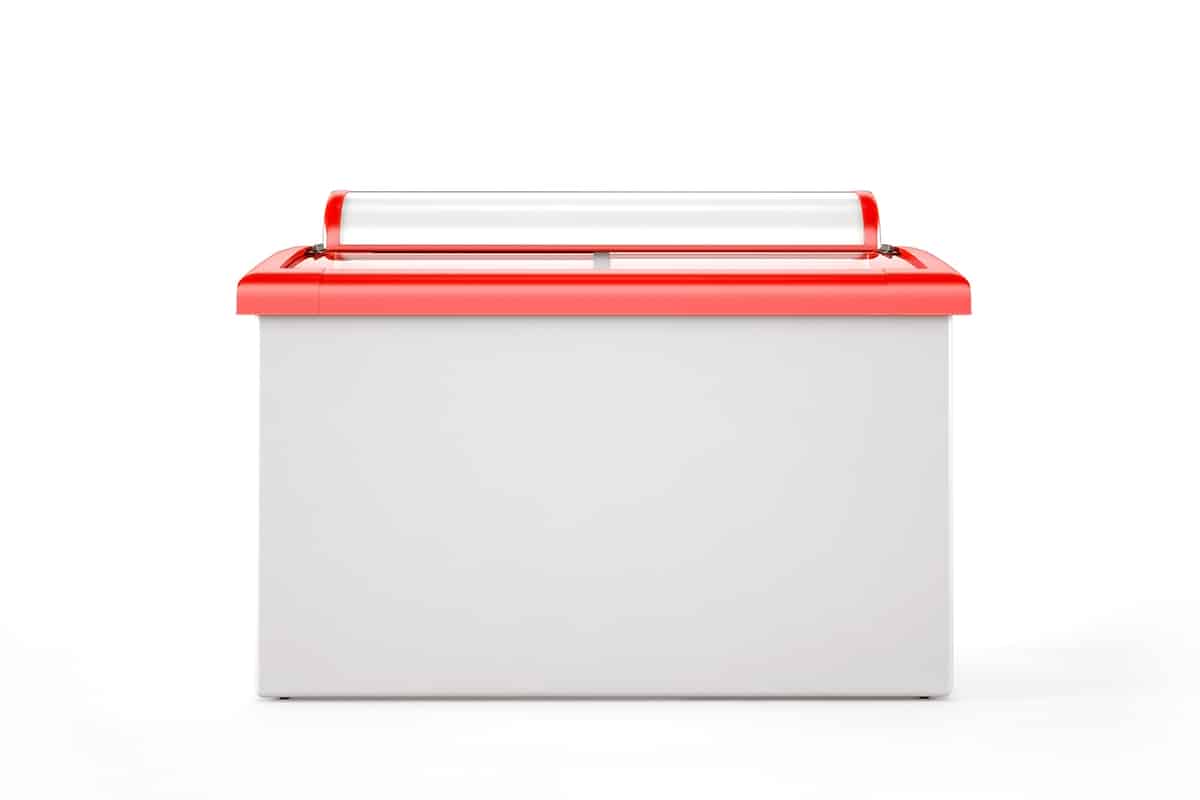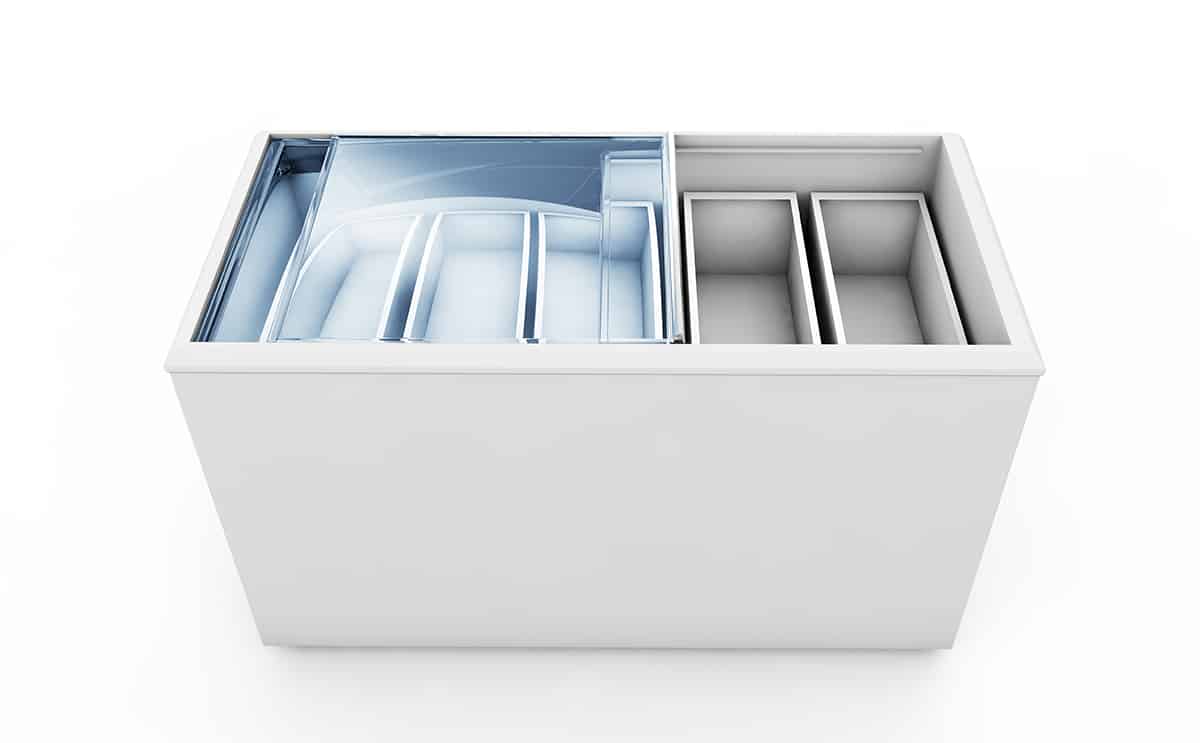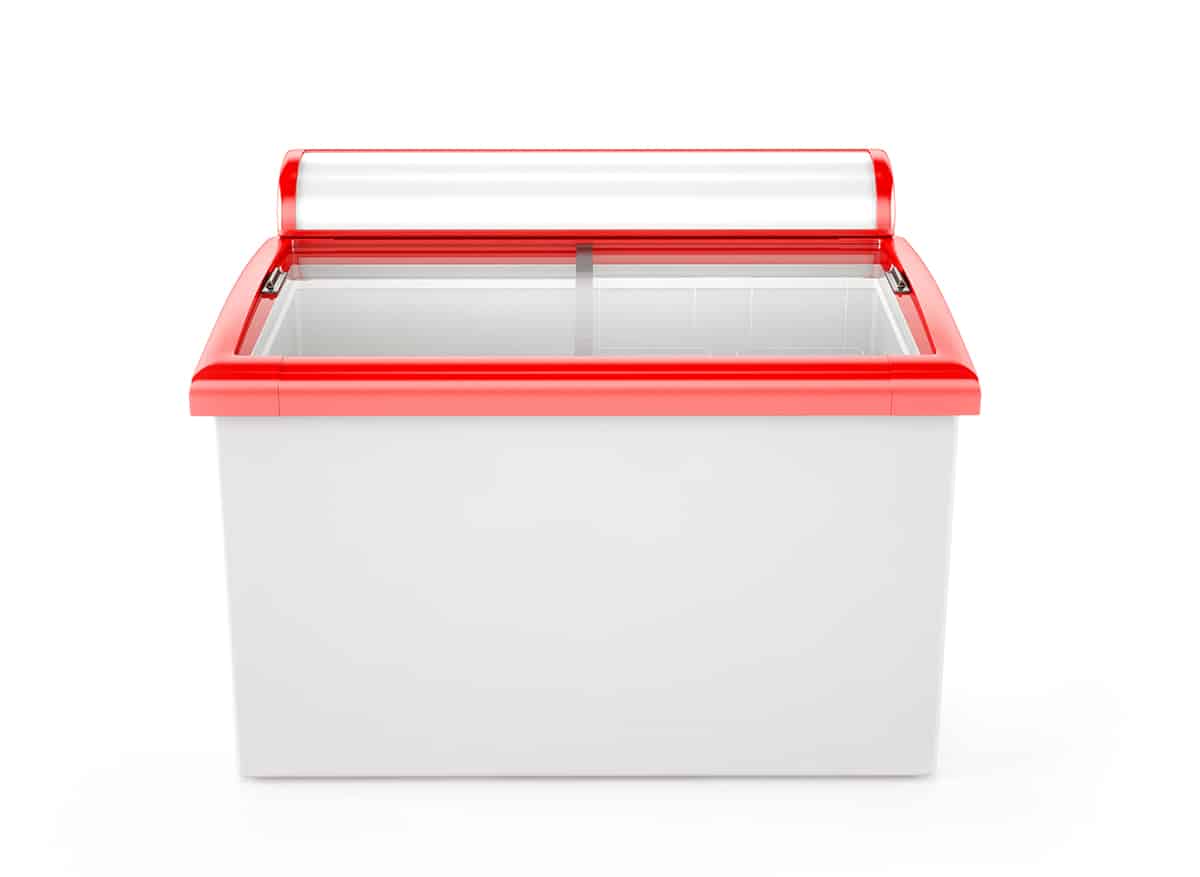Chest freezers are vital appliances for any household, providing valuable storage space for frozen goods and playing a key role in preserving food. However, they can sometimes encounter issues that affect their ability to freeze properly. This can be a frustrating and confusing problem for many homeowners, especially when it seems to occur unexpectedly.
Potential causes for your chest freezer not freezing mainly include:
- Faulty thermostats
- Defective start relay
- Insufficient airflow
- Malfunctioning evaporator fan motor
- Compressor issues
- Insufficient refrigerant
In this brief guide, we will learn about the intricate workings of your chest freezer, investigate common reasons it might stop freezing, and suggest ways to troubleshoot issues.
Basics of a Chest Freezer
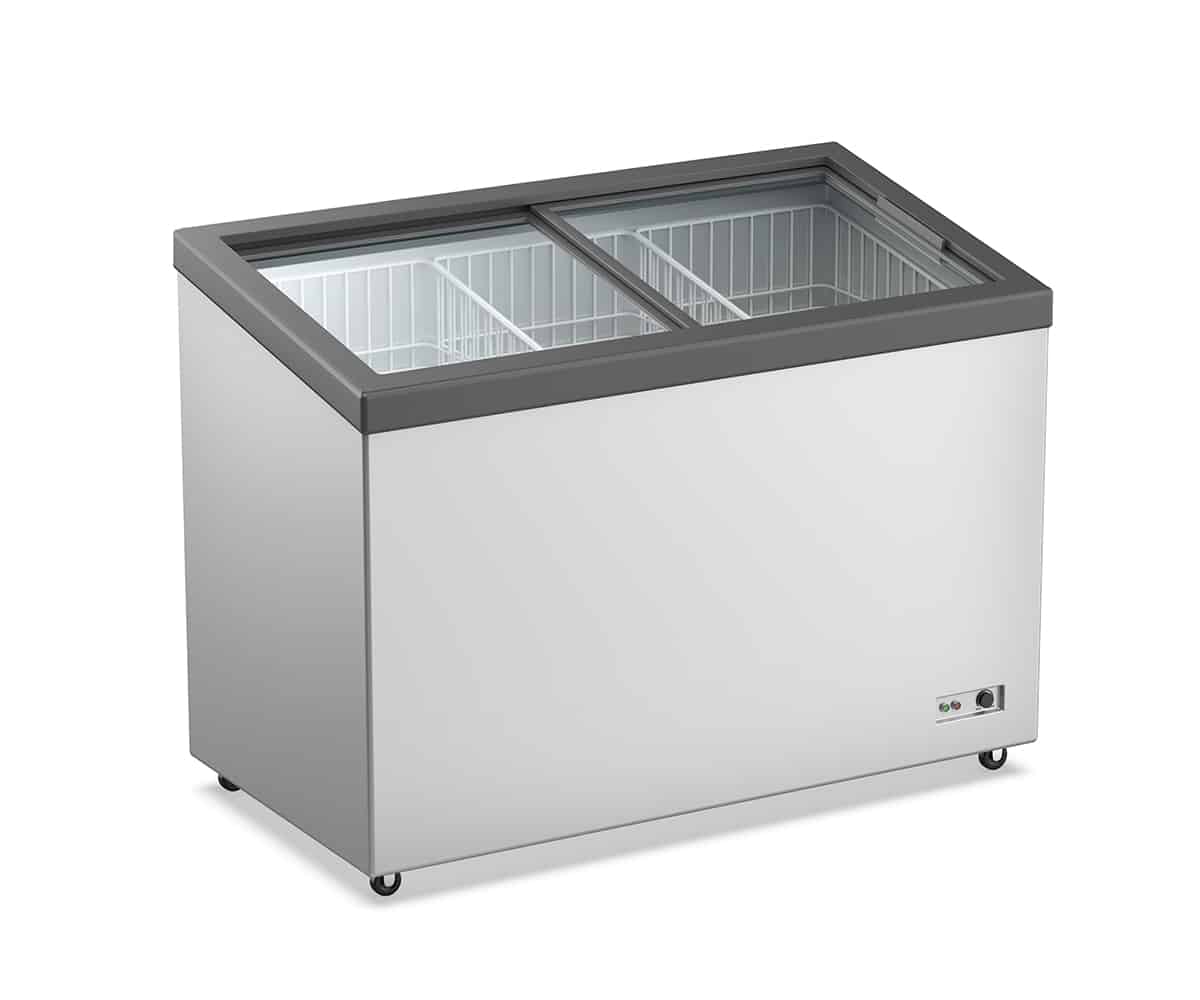
A chest freezer, a common household appliance, is designed to store and keep food items frozen for long periods. It serves a critical role in households, extending the shelf-life of perishables and providing a solution for bulk storage needs.
How a Chest Freezer Works
At the core, the principle of a chest freezer is to remove heat from the stored items and maintain an internal temperature below freezing point. It accomplishes this through a continuous cycle of refrigeration.
When you switch on the freezer, the compressor, the heart of your appliance, starts up. It compresses the refrigerant gas, causing it to heat up as it is pressurized. This hot, compressed gas then flows into the condenser coils on the outside of the freezer, where it dissipates its heat into the surrounding air, cooling down and transforming into a high-pressure liquid.
This liquid refrigerant then flows into the evaporator coil inside the freezer through a narrow capillary tube, causing it to expand and turn back into a gas. This phase transition absorbs heat from the interior of the freezer, lowering the temperature. The gas then returns to the compressor, and the cycle begins anew.
Key Components of a Chest Freezer
- Compressor: This is the heart of your freezer’s cooling system. It pressurizes the refrigerant, causing it to heat up and start its journey through the system. If the compressor is faulty, your freezer may not cool properly.
- Condenser Coils: These are situated outside the freezer and dissipate the heat carried by the refrigerant from inside the freezer. If these coils are dirty or damaged, they may not effectively release heat, causing your freezer to underperform.
- Evaporator Coils: Located inside the freezer, these coils house the cold refrigerant. As the refrigerant evaporates, it absorbs heat from the freezer interior, cooling it down. Faulty evaporator coils can lead to a malfunctioning freezer.
- Thermostat: This component regulates the temperature inside the freezer. It controls the on-and-off cycling of the compressor based on the interior temperature. A malfunctioning thermostat might not correctly regulate the freezer’s temperature, leading to overcooling or undercooling issues.
- Start Relay: This helps to start the compressor. If it’s defective, the compressor might not start, and the freezer won’t cool.
- Fan Motor: Some freezers have a fan to circulate cold air. If the fan is defective, the cold air won’t circulate properly, and the freezer might not reach the desired temperature.
Causes of a Chest Freezer Not Freezing
If your chest freezer isn’t freezing, several underlying issues could be responsible. Here are the most common culprits:
1. Thermostat Problems
The thermostat is responsible for controlling the temperature within the freezer. If it malfunctions, it might incorrectly gauge the internal temperature, leading the compressor to overwork or not run enough, causing the freezer to fail to reach the desired temperature.
2. Defective Start Relay
The start relay works in tandem with the compressor, providing it with the necessary power surge to start up. If it’s defective, it might fail to kickstart the compressor, resulting in inadequate cooling or even a complete failure to freeze. A clicking sound when the compressor tries to start often signals a faulty start relay.
3. Inadequate Airflow Around the Freezer
Chest freezers require adequate airflow around them to disperse the heat generated by the condenser coils. If the freezer is too close to a wall or surrounded by other objects, the heat might not dissipate effectively, causing the freezer to work harder and potentially fail to maintain freezing temperatures.
4. Faulty Evaporator Fan Motor
Some freezers come equipped with an evaporator fan to circulate the cold air within the freezer. If the fan motor is faulty, the cold air might not circulate effectively, leading to warmer spots in your freezer. The signs of a faulty evaporator fan motor often include uneven cooling and unusual noises.
5. Problems with the Compressor
The compressor is the heart of your chest freezer, driving the refrigeration cycle that cools the interior. If the compressor is malfunctioning, the freezer might not cool at all. Signs of a faulty compressor include the freezer not cooling, even though the thermostat is set to a low temperature, and the compressor not starting, even when the start relay is functioning correctly.
6. Insufficient Refrigerant
The refrigerant absorbs heat from the freezer interior and expels it via the condenser coils. If there’s a leak or insufficient refrigerant, the freezer won’t cool effectively. Signs of this include the freezer being warm, frost build-up on the evaporator coils, and a hissing or bubbling noise from the freezer.
Simple Checks and Fixes You Can Do
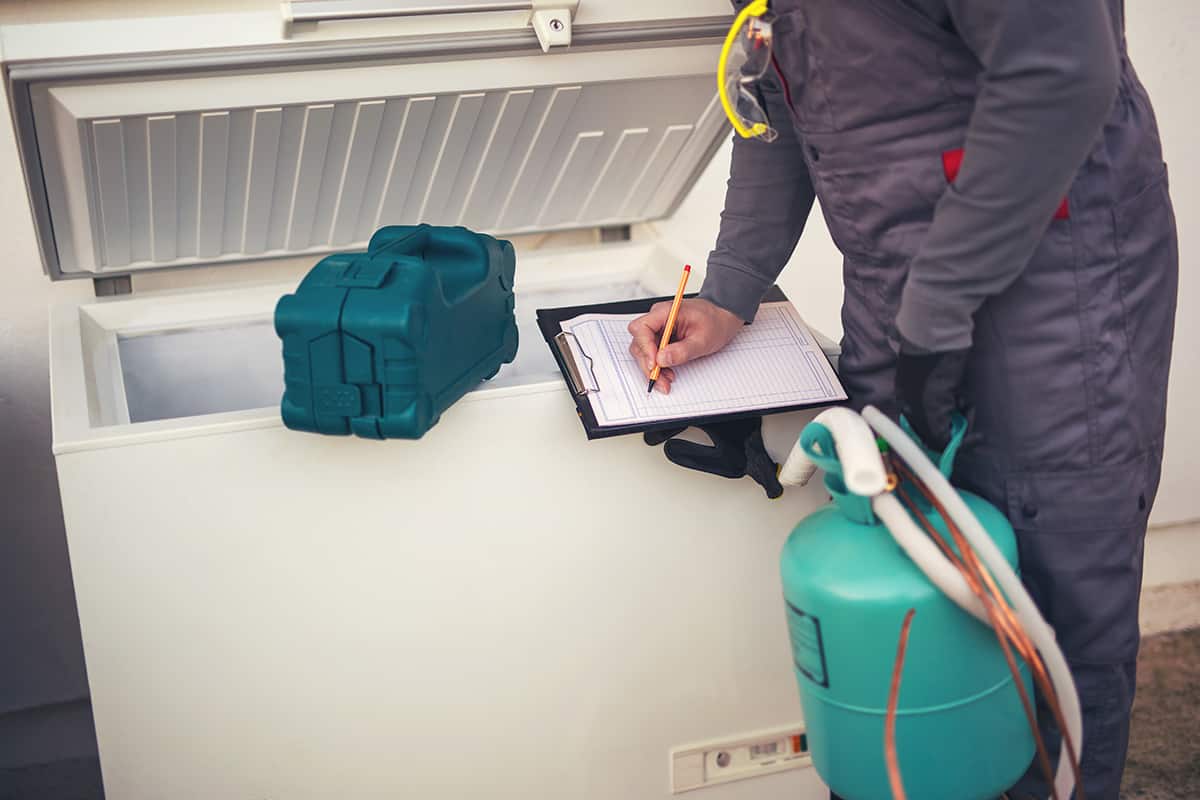
Before you call in a professional or contemplate buying a new chest freezer, there are some simple checks and fixes you can perform yourself. These can help identify and possibly rectify minor issues that might be preventing your chest freezer from freezing:
1. Checking the Thermostat
Ensure your thermostat is set to the right temperature. The ideal setting for a chest freezer is usually around -18°C (0°F). If it’s set higher, adjust it accordingly.
2. Inspecting the Seal
Examine the seal around the freezer door. If it’s damaged or dirty, it might not be sealing properly, allowing cold air to escape and warm air to enter. Clean the seal with a mild detergent, and if it’s damaged, consider replacing it.
3. Ensuring Adequate Airflow
Make sure there’s enough space around your chest freezer for heat to dissipate effectively. Ideally, there should be a few inches of clearance on all sides.
4. Defrosting the Freezer
If there’s excessive frost build-up in the freezer, it could be preventing effective cooling. Turn off the freezer, remove the items, and allow the frost to melt. Once fully defrosted, turn the freezer back on, and monitor the temperature.
Advanced Troubleshooting Tips
For more complex issues that aren’t solved by simple checks and fixes, you might need to delve a bit deeper. Here are some advanced troubleshooting tips. Remember, if you’re uncomfortable performing these checks, it’s best to call a professional:
1. Testing the Start Relay
If the freezer isn’t cooling and you hear a clicking sound when the compressor tries to start, the start relay might be defective. You can test this with a multimeter. If it’s defective, the chest freezer should be replaced.
2. Checking the Evaporator Fan Motor
If your chest freezer has an evaporator fan and it’s not running, it could be due to a faulty fan motor. You can check this by opening the freezer door and pressing the door switch. If the fan doesn’t run, it might need replacement.
3. Inspecting the Compressor
If the compressor doesn’t start, even when the start relay is functioning correctly, it could be defective. This is a complex issue and usually requires professional assistance.
4. Detecting Refrigerant Leaks
Refrigerant leaks are often signaled by a hissing or bubbling noise, or frost build-up on the evaporator coils. Dealing with refrigerant requires professional expertise due to the substance’s volatile nature.
